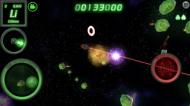

Exploring tertiary students’ understanding of covalent bonding, Research in Science and Technological Education, 20, 241–267.Ĭoll, R.

New Philosophical Perspectives on Chemistry, New York: Oxford University Press.Ĭoll, R. ‘Laws’ and ‘Theories’ in Chemistry Do not Obey The rules in Bhushan N. OnLine First 23th August, 2011.Ĭhristie, M. Heuristic Diagrams as a Tool to teach History of Science, Science & Education, 21(5), 745–762. A new definition of Models and Modelling for chemistry Teaching, Science & Education OnLine First 01 November, special issue on edited by Sibel Erduran.Ĭhamizo, J.A. Teaching modern chemistry through ‘historical recurrent teaching models’, Science & Education, 16(2), 197–216.Ĭhamizo, J.A.

(2001) El curriculum oculto en la enseñanza de la química, Educación Química, 12(4), 194–198.Ĭhamizo, J. John Dalton, México: Conaculta-Pangea.Ĭhamizo, J.A. Retracing the Ancient Steps to atomic theory, Science & Education, 7(1), 69–84.Ĭhamizo, J.A. The understanding of the atomic orbital concept by Italian high school students, Journal of Chemical Education, 58(7), 568–9.Ĭhalmers, A. Berkeley, CA, USA: Lawrence Hall of Science.Ĭervellati, R. HSC chemistry students’ understanding of the structure and properties of molecular and ionic compounds, Research in Science Education, 17, 192–201.Ĭampbell, J. The Birth of microphysics, Cambridge Massachusetts: The MIT Press.īutts, B., & Smith, R. 11–29), Secaucus, NJ, USA: Springer.īuchwald, J. (Eds.) Multiple Representations in Chemical Education, (Chapter 1, pp. Learning at the Sub-micro Level: Structural Representations, in Gilbert, J. Gilbert Newton Lewis, 1875–1946, Journal of Chemical Education, 61(1), 18–21.īucat, R., & Mocerino, M. Students’ Understandings of Chemical Bonds and the Energetics of Chemical Reactions, Journal of Research in Science Teaching, 35(5), 569–581.īranch, G.E.K. Group theory and chemistry, Oxford, UK: Clarendon Press.īoo, H. Effect of experience on retention and elimination of misconceptions about molecular structure and bonding, Journal of Chemical Education, 76(1), 124–128.īishop, D. Should orbitals be X-rated in beginning chemistry courses? Journal of Chemical Education, 61(5), 421–423.īirk, J., & Kurtz, M.

Atomism and Positivism: A legend about French Chemistry, Annals of Science, 56, 81–94.īent, H. Oxford: Oxford University Press.īensaude-Vincent, B. Kirsehir Journal of Education (KEFAD) 11, 113–127.īaggott, J. A sociological standpoint to authentic scientific practices and its role in school science teaching, Ahi Evran Uni. Quanta, Matter and Change: A Molecular Approach to Physical Chemistry, Oxford: Oxford University Press.Īyar, M., & Yalvac, B. Solving quantum number problems: An examination of novice performance in terms of conceptual based requirements, Journal of Chemical Education, 79(4), 510–3.Ītkins, P., de Paula, J., & Friedman, R. 171–193), Cambridge, Massachusetts: The MIT Press.Īrdac, D. The Birth of Microphysics, (Chapter 5 pp. The Zeeman Effect and the Discovery of the Electron? In Buchwald J.Z. (2012) A ‘Semantic’ View of Scientific Models for Science Education, Science & Education, Online First, 17 January.Īnderson, P. 403–424), Cambridge, Massachusetts: The MIT Press.Īdúriz-Bravo A. The Birth of Microphysics, (Chapter 13 pp. Who really discovered the electron? In Buchwald J.Z.


 0 kommentar(er)
0 kommentar(er)
